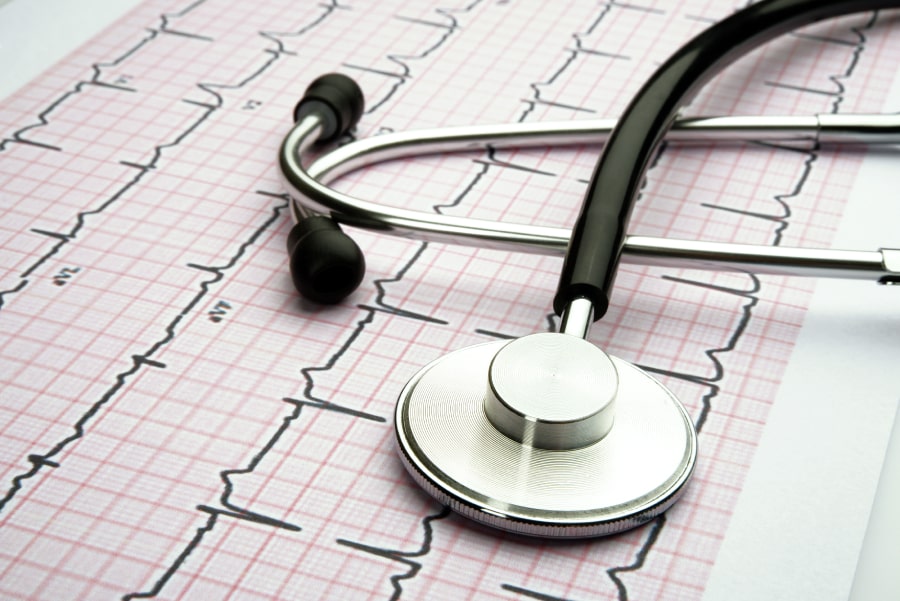
Identifying the cause of fainting, dizziness and blackouts may be challenging for your doctors. The symptoms are very distressing and cause considerable disability. There are several challenges that make these symptoms so hard to deal with in patients with atrial fibrillation.
Firstly, they are very common in older age groups most susceptible to atrial fibrillation. Secondly, in most cases, atrial fibrillation is not the primary cause (unless very fast or very slow). Finally, atrial fibrillation may, indirectly, contribute to the presentation of a stroke or the reduced ability of sufferers to cope with dehydration, infection or other stresses that reduce blood pressure and medication used in the treatment of atrial fibrillation.
Confusingly, the terms dizziness, vertigo, light-headedness and fainting are often used interchangeably. It is for this reason that teamwork, patience and meticulous attention to detail are needed. You need to be well prepared when you see your physician to help them arrive at the correct diagnosis.
When you experience any of these symptoms, it is important to make a note of all the features you may experience before, during and after the attack. This is best done shortly after the attack when it is fresh in your memory.
If there are witnesses to the event, ask them what they observed and if possible, encourage them to attend when you visit the doctor. If you receive medical attention from a paramedic, try to obtain any blood pressure or pulse records made when they saw you.
Important things to note when you have had an attack
One of the key features your physician will concentrate on is whether you lost consciousness. Many of the causes of feeling faint will make you less aware of your surroundings but they do not lead to you being unconscious.
You may still be rousable or able to open your eyes to communicate to a family member or bystander. If you definitely ‘blacked out’ or lost consciousness, try to establish the period you were out for, particularly if there is a witness to the event.
It is important to remember when someone is attending to you when you are unconscious, a minute or two can seem much longer. Therefore, any objective measurements and observations will be particularly useful.
The reason for prioritising this feature is because loss of consciousness due to heart rhythm disturbances is particularly important feature. Causes of blackouts due primarily to heart rhythm disturbances usually last for less than one minute, longer periods of unconsciousness are more likely to be due to other causes.
Other observations include:
- jerking of the arms or legs
- eye-rolling
- grunting
- pallor
- incontinence
- tongue bitting
It is helpful to remember how you felt prior to the attack. Also, if you have been ill for other reasons, it would be helpful to know if there had been a recent change to your medication.
Noting if the symptoms are always when standing, getting up from lying down or sitting or aborted by lying down are important too as these are all common features of a fall in blood pressure on standing (postural hypotension). Individuals with heart muscle disease (heart failure, cardiomyopathy) who are on multiple blood pressure-lowering medications may be particularly susceptible to this problem.
Symptoms of warmth, nausea, light-headedness may precede a simple faint (sometimes referred to as a vaso-vagal attack). Unusual sensations such as a smell, Deja vu or involuntary movements of a limb prior to an attack may indicate epilepsy.
The recovery period is also important. How long did you feel unwell, tired or confused for after the event? The longer the period lasts the less likely the cause is cardiac.
Vertigo and lightheadedness
Many people find it difficult to distinguish between vertigo and light-headedness. Vertigo is a sensation of the world spinning and is usually an indication of inner ear problems rather than a problem with the heart. This may be positional and occur after head movement, lying down or turning over in bed. More definitive features of a cause due to heart disease would be a sudden onset without warning or an episode associated with chest pain or palpitations.
In some cases, the cause of these symptoms may be evident on the initial examination. For example, a drop in blood pressure on standing which reproduces the symptoms may confirm a diagnosis of what doctors call postural hypotension.

The demonstration of atrial fibrillation on an electrocardiogram (ECG) will not be sufficient to establish this as the cause of your symptoms, often the examination and ECG may be normal at the time you see your doctor and clues to the cause will rely entirely on the features in your history noted above.
If this points to a neurological cause or a problem with the inner ear onward, a referral will usually be necessary. However, in most cases, further cardiological investigations will be required to exclude or confirm a cardiac cause and whether atrial fibrillation is responsible.
An echocardiogram (ultrasound of the heart) is usually required to exclude a heart disease (disease of the cardiac valves or of the cardiac muscle). Other investigations may include prolonged recordings of the heart tracing (ECG recorders which may be worn by the patient or implantable devices for very long-term ECG monitoring, called ILR) or blood pressure (ambulatory blood pressure monitoring) in an attempt to make these recordings when you are symptomatic.
In a minority of cases, more detailed electrical investigations of the heart (electrophysiological studies) require a short admission to hospital.
Above all, it is important to remember that it often takes time to establish the cause of fainting, dizziness and blackouts and physicians recognise how worrying this can be. The more information about the incident you can provide to your physician, the better chance there is of an early diagnosis.

 Français
Français Deutsch
Deutsch Español
Español Italiano
Italiano Nederlands
Nederlands Polski
Polski Русский
Русский Svenska
Svenska Português
Português Hrvatski
Hrvatski Ελληνικα
Ελληνικα 简体中文
简体中文 العربية
العربية
